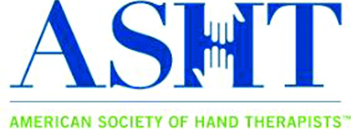
16 Mar Treating Your AC Joint Injury
When you are experiencing pain and immobility in your shoulder, it can severely impact your quality of life. The acromioclavicular (AC) joint is the joint that connects your shoulder blade and collarbone. An AC joint injury describes an injury to the top of your shoulder. At East End Occupational Therapy, we understand the severity of AC joint injuries and want to help our patients dealing with this improve their strength after injury.
What Is The AC Joint?
The AC joint is a joint in the shoulder where the collarbone and shoulder blade meet. The part of the shoulder blade that meets the collarbones is called the acromion. Like many joints where bones meet, there is cartilage in between the two bones.
What Are AC Joint Conditions?
Unfortunately, there are many conditions and injuries that can occur in the AC joint. The most common are arthritis, separations, and fractures. The two types of injuries that can typically occur at the AC joint are:
- Traumatic Injury: A traumatic AC joint injury can happen when the ligaments that hold your collarbone to your collarbone are damaged. This injury is known as a shoulder separation, and it involves the ball-and-socket joint of the shoulder. Traumatic AC joint injuries are common in people that fall and land on the outside of the shoulder. For example, a football player can sustain this injury after being tackled. Treatment for this injury will depend on the severity of the damage and the amount of separation of the joint.
- Overuse Injury: An overuse AC injury occurs as repeated stress is placed on the joints. Over time, the cartilage at the end of the acromion and clavicle may endure too much damage. These injuries are common in individuals who work in jobs that require physical labor and those who engage in heavy weight lifting.
Some symptoms you may experience with an AC joint injury may include:
- General pain in the shoulder
- Swelling over the AC joint
- Loss of motion in the shoulder
- A visible bump
- Discomfort when performing overhead motions or carrying heavy objects at your side.
Treating AC Joint Injuries
You should not let your injury go untreated. After suffering an injury, our team will thoroughly evaluate your health and pain history. This evaluation will allow us to understand your injury, what positions improve the pain or worsen it, and what activities you do that might contribute to your pain. After your evaluation, we will assess your range of motion, strength, and flexibility that may affect your pain. When all other possible conditions have been ruled out and your injury is diagnosed, our team will work with you to develop a unique plan tailored to your specific situation and your goals.
Can AC Injuries Be Prevented?
While it can be challenging to prevent traumatic AC joint injuries, you can do a lot to avoid the events that lead to overuse injuries. If you are working in an industry that demands a lot from you physically, you should know about the risks of pushing yourself through the pain. Keep a close eye on your work and weight lifting activities, and avoid repetitive overhead motions when possible. It is also essential that you maintain adequate shoulder health to perform your desired tasks safely. If you are concerned with your symptoms and are looking to learn more about AC joint conditions, please do not hesitate to reach out to our team.
Contact Us
At East End Occupational Therapy, our primary focus is getting you back to normal and achieving your goals. Our specialized therapists will combine their comprehensive knowledge of upper extremity anatomy with advanced skills to treat dysfunctions. After we address your injury and you are recovering, we will provide you with the tools and information you need to prevent further damage. Contact us today to schedule an appointment!





Sorry, the comment form is closed at this time.